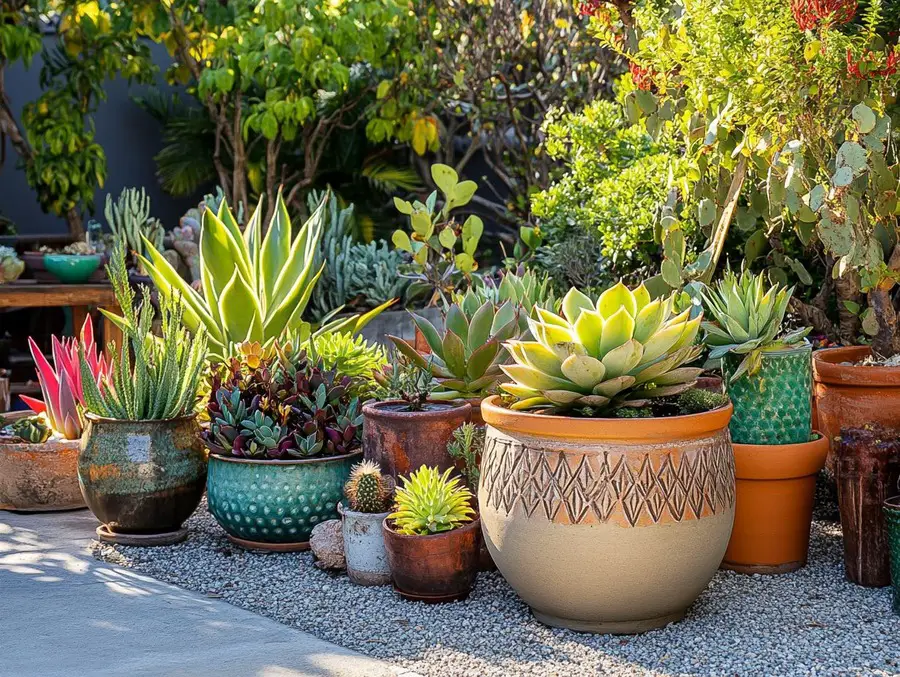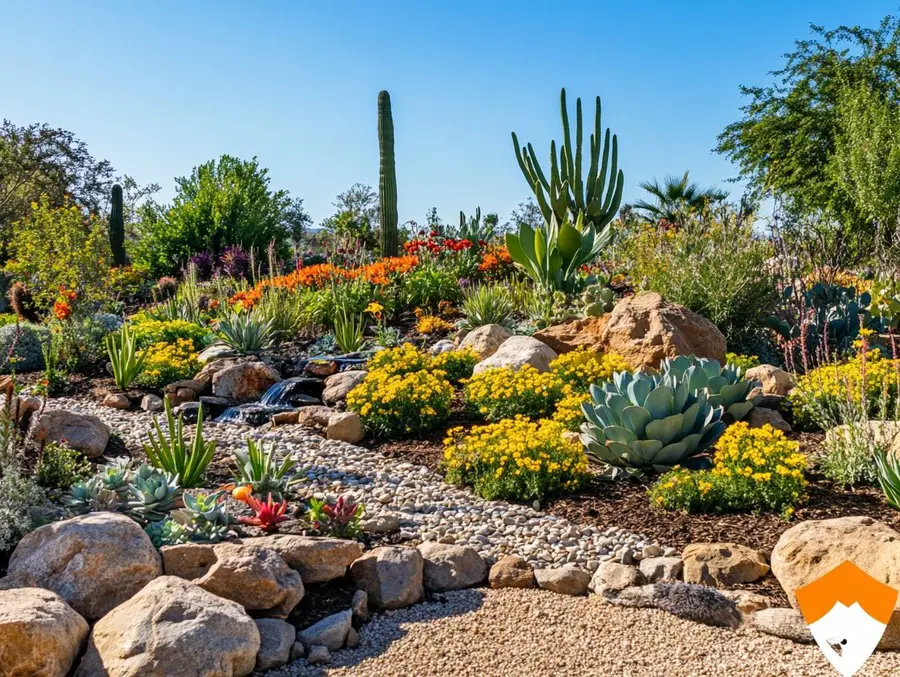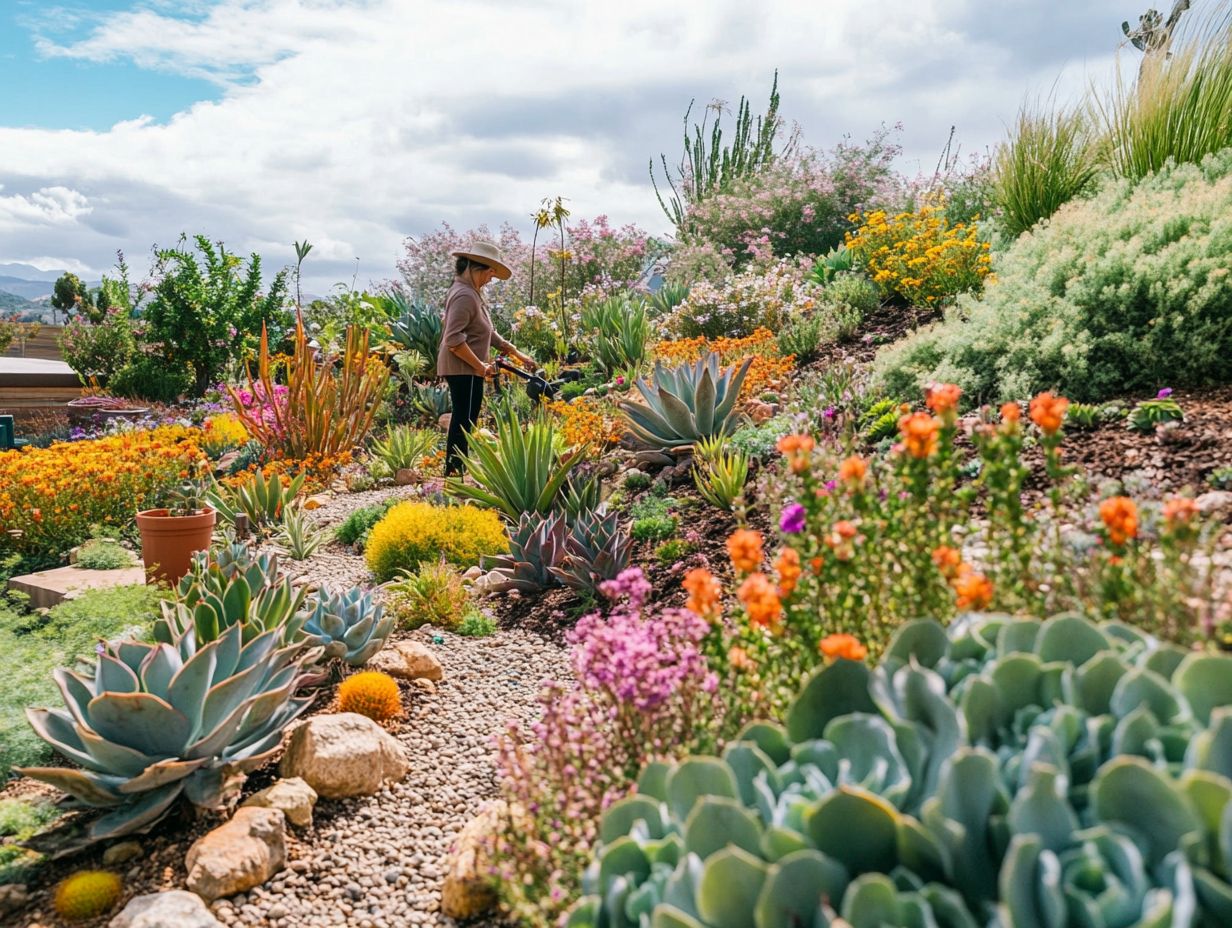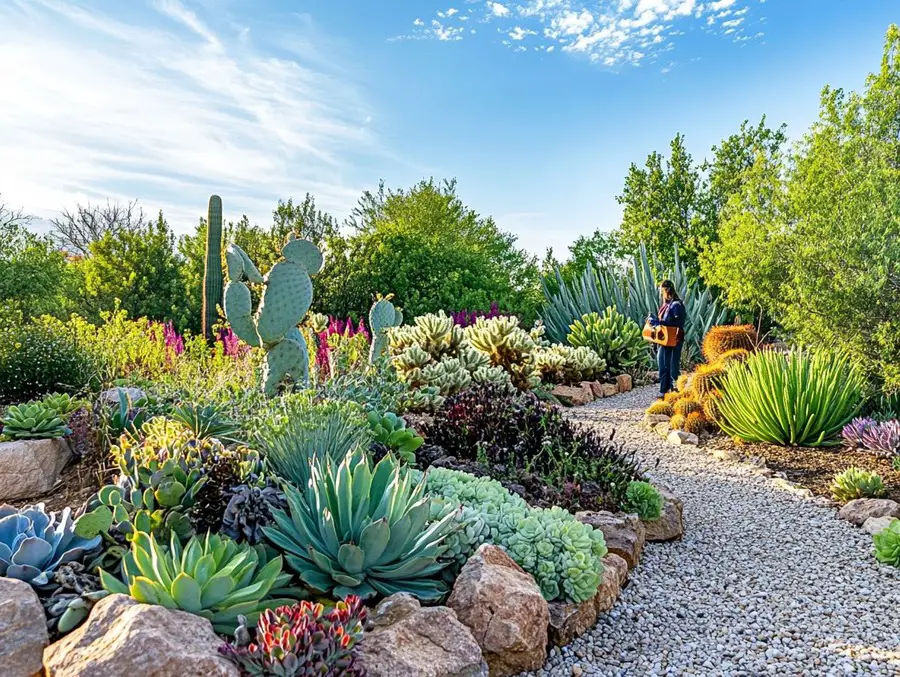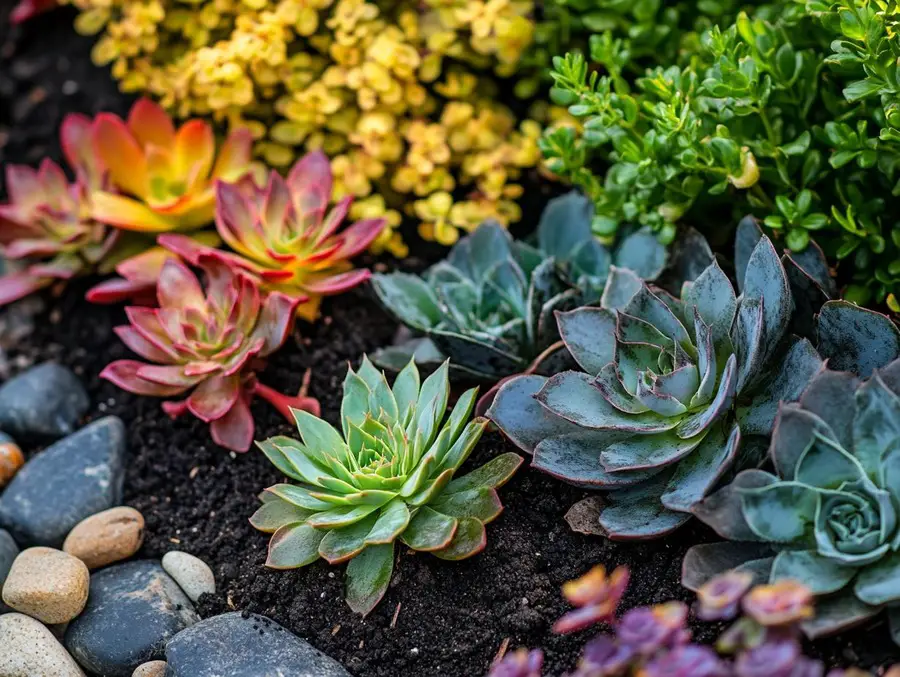We use affiliate links. If you purchase something using one of these links, we may receive compensation or commission.
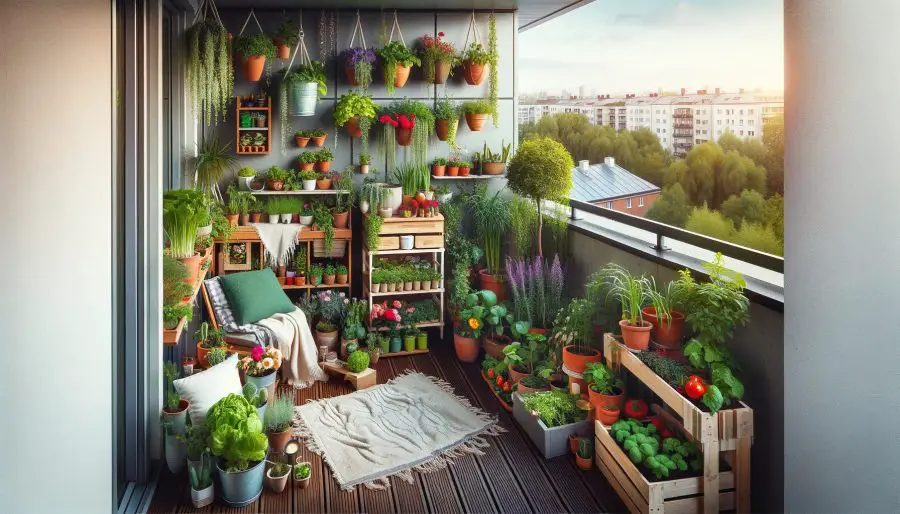
Discover the joys of balcony gardening for beginners! Learn how to transform your small balcony into a lush, green oasis with easy-to-follow tips and creative ideas.
Balcony Gardening for Beginners
Key Takeaways:
- Balcony gardening for beginners involves utilizing small outdoor spaces to grow plants, herbs, and vegetables.
- It’s a fantastic way to bring greenery to urban areas, offering a manageable approach to gardening in limited spaces.
- Beginners can easily start with basic tools and low-maintenance plants, making it an accessible and rewarding hobby.
Get ready to embrace the art of balcony gardening for beginners and turn your small outdoor space into a vibrant garden!
This guide offers simple, effective ways to cultivate a green haven, perfect for city dwellers or anyone looking to add a touch of nature to their home.
Balcony Gardening for Beginners
Are you ready to transform your balcony into a lush and vibrant garden oasis?
In this comprehensive guide, we will explore the essential steps for successful balcony gardening, perfect for beginners and seasoned gardeners alike.
From assessing your balcony space and sunlight levels to selecting the ideal plants for small spaces, optimizing space with vertical gardening, and understanding balcony gardening restrictions, we’ve got you covered.
Whether you’re dreaming of growing your own fruits and vegetables or creating a serene green retreat, this article will provide practical tips and creative ideas to help you maximize your balcony space and nurture a thriving garden.
Get ready to unleash your green thumb and elevate your outdoor living space with our expert advice on balcony gardening.
Key Takeaways:
- Assess your balcony space and sunlight levels to determine the best plants to grow.
- Choose plants with a compact growth habit for small balcony spaces.
- Maximize space with vertical gardening and utilize wall space for hardy plants.
Assess Your Balcony Space and Sunlight Levels
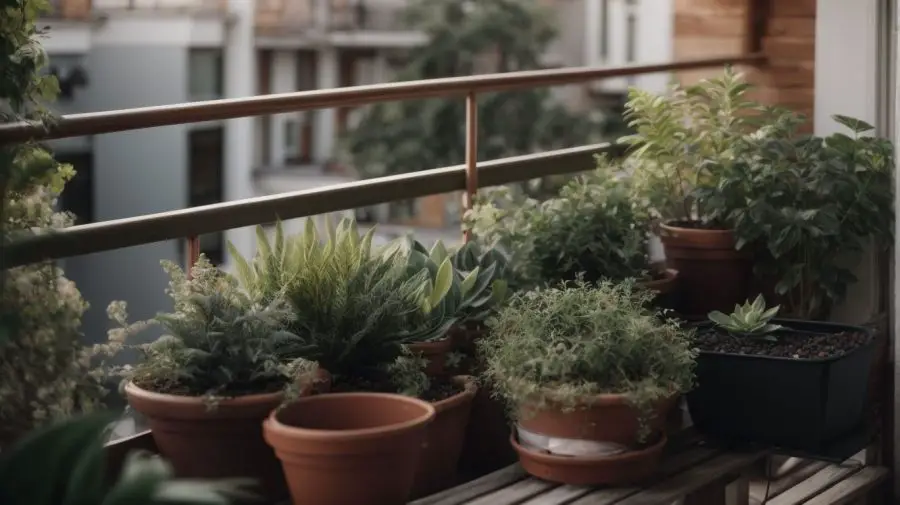
When starting out balcony gardening, it’s essential to assess your available space and the sunlight levels that your balcony receives.
Understanding the unique microclimate of your balcony, potentially influenced by neighboring buildings and prevailing winds, can help you make informed decisions about plant selection and placement.
Consider the impact of the microclimate on your balcony garden; for instance, if it’s a sun-drenched south-facing balcony, you may have different planting options than a shaded east-facing one.
The microclimate influences plant growth, hydration needs, and overall plant health.
Experts highlight the significance of optimizing space and sunlight for balconies, emphasizing the immense potential for creating beautiful urban oases.
By utilizing the available space and catering to sunlight conditions, you can cultivate a flourishing and vibrant balcony garden.
Choose Plants for Survival in Small Spaces
Selecting plants that can thrive in small spaces is crucial for balcony gardening success.
With restrictions on available space, opting for compact varieties of herbs, trees, shrubs, and flowers can ensure an abundant and visually appealing balcony garden.
Select Fruit and Vegetables with a Tidier Growth Habit
When incorporating fruit and vegetables into your balcony garden, prioritize varieties with a tidier growth habit and suitability for containers or grow bags.
Look for bush or compact varieties for vegetables and other plants.
This approach maximizes space efficiency while allowing you to enjoy the rewards of homegrown produce in a confined setting.
Pick the Right Plants for Pots
Choosing the right plants for pots is essential for balcony gardening success, as it involves considerations such as soil requirements, water needs, and compatibility with container growth.
Selecting plants that thrive in potting environments ensures healthy growth and vibrant displays on your balcony.
Here’s a table categorizing vegetables, flowers, and other plants that thrive in containers, perfect for balcony gardening or small space gardening:
| Category | Plants | Notes |
|---|---|---|
| Vegetables | Tomatoes | Choose dwarf or bush varieties for compact growth. |
| Peppers | Need warm, sunny conditions and regular watering. | |
| Lettuce | Ideal for cooler conditions, and great for succession planting. | |
| Radishes | Fast-growing, suitable for shallow containers. | |
| Carrots | Deep containers are needed for root development. | |
| Herbs (Basil, Mint, etc.) | Perfect for small spaces, useful for cooking. | |
| Flowers | Petunias | Bright and colorful, suitable for hanging baskets. |
| Marigolds | Easy to grow, pest-repellent properties. | |
| Geraniums | Drought-tolerant, great for sunny balconies. | |
| Begonias | Thrive in both sun and shade conditions. | |
| Pansies | Cool-weather flowers offer a variety of colors. | |
| Other Plants | Ferns | Ideal for shady balconies. |
| Succulents | Low maintenance, requires minimal watering. | |
| Small Shrubs (Boxwood, etc.) | Adds structure, can be pruned into shapes. | |
| Dwarf Fruit Trees | Citrus, apple, and cherry trees can be grown in large pots. |
This table provides a good starting point for selecting plants for container gardening.
It’s important to consider the specific needs of each plant, such as sunlight, water requirements, and the size of the container needed.
Remember, the key to successful container gardening is choosing the right plant for the right place!
Optimize Space with Vertical Gardening
Optimizing space on your balcony can be achieved through vertical gardening techniques such as utilizing hanging baskets and trellises.
These innovative approaches not only maximize space but also create visually stunning greenery and floral displays in a limited area.
Utilize Wall Space for Hardy Plants
Making the most of wall space by cultivating hardy plants, climbers, and vines in containers can significantly enhance the greenery and vitality of your balcony garden.
The vertical aspect not only saves space but also adds an aesthetic dimension to your outdoor oasis.
Consider Low-Maintenance Plant Options
When creating a balcony garden, consider incorporating low-maintenance plant options such as hardy herbs in containers.
Succulents are easy-to-grow compact plants that do well on sunny balconies.
These choices not only require minimal upkeep but also thrive in constrained environments, making them ideal for balcony gardening enthusiasts with busy lifestyles.
Enhance Your Balcony Garden with Functional Furnishings
Incorporating functional furnishings such as planters and garden furniture can transform your balcony into a vibrant and inviting outdoor retreat.
These additions not only complement your greenery but also provide practical utility and aesthetic appeal within the limited space.
Transition Houseplants Outdoors for Summer
Transitioning houseplants outdoors to the balcony for the summer season can invigorate your outdoor space with lush greenery and vibrant blooms.
Exposure to direct sunlight and the open terrace environment can revitalize houseplants while enhancing the appeal of your balcony garden.
However, always transition houseplants gradually when bringing them outdoors.
Maximize Your Balcony Space
Maximizing the use of your balcony space is key to creating an abundant and visually captivating garden.
Whether you have a compact balcony or a spacious rooftop terrace, strategic planning, and innovative gardening techniques can make the most of your outdoor area.
Use Vertical Gardening
Effective space utilization involves utilizing vertical space with hanging or wall-mounted planters, utilizing railing planters, and utilizing multi-level shelving or stands.
Selecting compact and multi-functional furniture can create more floor space for potted plants and containers.
For rooftop terraces, consider incorporating raised garden beds or creating a layered garden design to optimize growing space.
Implementing space-saving irrigation systems and proper plant selection are also crucial for maximizing gardening potential in limited outdoor areas.
Understand Balcony Gardening Restrictions
Understanding the restrictions and limitations imposed by factors such as weight constraints and climate conditions is essential for successful balcony gardening.
Adhering to these guidelines ensures the safety and sustainability of your balcony garden while allowing you to make informed plant and design choices.
In terms of weight constraints, balconies have a specific load-bearing capacity, and exceeding this limit can pose serious safety risks.
Before You Start
Talk to your building manager and find out if there are weight or other restrictions for your building.
By understanding the structural limitations and carefully selecting lightweight soil, pots, and materials, you can ensure that your balcony can support the garden without compromising its integrity.
Climate considerations
Climate plays a crucial role in determining the types of plants that can thrive on your balcony.
Assessing the amount of sunlight, wind exposure, and temperature variations will help you choose plants that are well-suited to the conditions, fostering their growth and overall health.
Prioritizing safety and sustainability not only benefits your well-being but also contributes to the environment.
By using eco-friendly materials, implementing water-saving techniques, and avoiding harmful chemicals, you can create a balcony garden that harmonizes with nature and enhances the overall appeal of your outdoor space.
Efficient Watering Techniques for Balcony Gardens
Implementing efficient and precise watering techniques is crucial for maintaining the health and vitality of plants in a balcony garden.
The use of appropriate watering methods and container considerations can optimize water usage while promoting optimal growth and flourishing greenery.
One of the key factors in balcony gardening is understanding the watering needs of different plant varieties.
For example, containers with good drainage are essential to prevent waterlogged soil, which can lead to root rot and other plant diseases.
Tailoring watering schedules according to the individual needs of plants is also critical, as over or under-watering can have adverse effects on plant health.
Use the finger test. Insert a finger an inch or two into the soil. If it is dry water if it isn’t hold off on watering.
Ideal Plants for Balcony Gardening
Identifying the ideal plants for balcony gardening involves considering a diverse range of options, including herbs, trees, shrubs, and vibrant flowers that thrive in confined outdoor spaces.
Selecting the right mix of greenery and blooms can transform your balcony into a lush and inviting garden retreat.
Herbs like basil, mint, and rosemary not only provide flavor to your culinary creations but also add a refreshing aroma to your balcony.
Small trees such as citrus or dwarf apple trees can create a striking focal point while offering fruits or blossoms.
Meanwhile, compact shrubs like lavender or hydrangeas bring beauty and texture.
The addition of vibrant flowers such as petunias, geraniums, and marigolds introduces a burst of color, enhancing the visual appeal of your balcony oasis.
Choose the Best Containers for Balcony Gardening
 Selecting the best containers for balcony gardening, such as innovative planters and pots plays a pivotal role in creating a thriving and visually appealing outdoor oasis. These container choices not only facilitate optimal growth but also contribute to the aesthetic allure of your balcony garden.
Selecting the best containers for balcony gardening, such as innovative planters and pots plays a pivotal role in creating a thriving and visually appealing outdoor oasis. These container choices not only facilitate optimal growth but also contribute to the aesthetic allure of your balcony garden.
Consider using self-watering planters if you have a busy schedule or are forgetful.
When choosing containers for balcony gardening, it’s important to consider both the functional and aesthetic aspects. Innovative self-watering planters are designed to provide the ideal environment for plant growth.
Creative Balcony Garden Ideas
Exploring creative balcony garden ideas can inspire innovative and visually captivating designs that optimize space and sunlight.
Leveraging unique concepts and design elements can elevate the aesthetic appeal and functionality of your balcony garden.
Implementing creative balcony garden ideas entails utilizing various innovative techniques and elements, from vertical gardens and hanging planters to incorporating multi-functional furniture and clever lighting solutions.
By integrating these visionary concepts, you can transform your balcony into a lush oasis or a cozy retreat, enhancing the overall ambiance and creating a personal haven amidst the urban landscape.
The impact of these innovative designs transcends mere aesthetics, fostering a sense of connection with nature and providing an immersive experience within a limited space.
Learn more: Balcony Gardening: Comprehensive Guide
Frequently Asked Questions
What is balcony gardening for beginners?
Balcony gardening for beginners is the practice of growing plants, vegetables, or herbs on a small balcony or outdoor space. It is a great way to add greenery and beauty to your living space, even if you have a limited outdoor area.
What are the benefits of balcony gardening for beginners?
There are many benefits to balcony gardening for beginners, including being able to grow your own fresh produce, reducing stress and improving mental health, and creating a more inviting and visually appealing outdoor space.
What plants are suitable for balcony gardening for beginners?
Some easy and low-maintenance plants that are suitable for balcony gardening for beginners include herbs like basil, mint, and rosemary, as well as vegetables like cherry tomatoes, peppers, and lettuce.
Can I start balcony gardening for beginners if I have a small balcony?
Yes, balcony gardening for beginners is perfect for small spaces. You can use vertical gardening techniques, such as hanging baskets or shelves, to maximize the use of your balcony space.
Do I need any special tools or equipment for balcony gardening for beginners?
No, you do not need any special tools or equipment for balcony gardening for beginners. A small watering can, gardening gloves, and a trowel are all you need to get started. You can also repurpose items like old containers or jars for planting.
How do I maintain my balcony garden as a beginner?
As a beginner, it is important to start small and choose low-maintenance plants. Make sure to water your plants regularly and provide them with enough sunlight. You can also use organic fertilizers and keep an eye out for pests and diseases.
Related Content
Visit my Amazon Influencer Page for videos and gardening products Grow Your Own Garden







